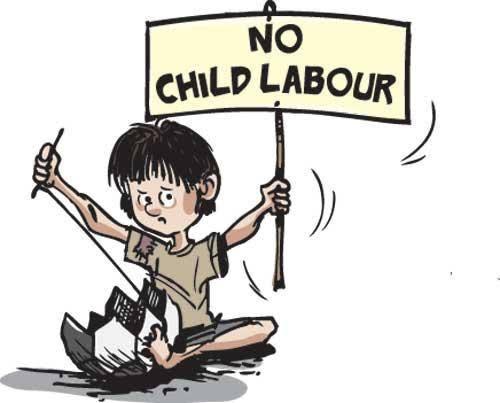In a very usual ritual, children from different corners of the world are employed via paid or unpaid means to work. According to a report presented by United Nations, nearly 152 million children in the world are into child labour and 72 million of them are into hazardous works. Children, referencing to the age group between 5 -17 years, too weak or too young involved in any form of labour that impacts them physically, mentally, socially, or might even hamper their educational progress are subjected to child labour.
Children, out of their inherent innocence and nurturing vulnerability are highly prone to suffer and be engaged easily into such activities. It has been reported that almost one in 10 children throughout the world have experienced child labour. Child labour is in United Nations’ Sustainable Development Goals at a target of 8.7 and their ambitions planning is to stop it by 2025.
Ranking according to the continent, Africa takes the lead position with 72 million children under child labour following which Asia and the Pacific counts with 62 million children. Together, these form the 9 out of the 10 children on the global ranking. The rest can be observed in America with 11 million children following with
Europe and Central Asia includes 6 million and then comes Arab states with 1 million children.
Digressing into logistics, it is quite obvious that child labour runs wide into low-income countries and then progresses a little lesser in middle-income countries. The most common occupation which has child labour includes agriculture backed up with 71% which bifurcates into fishing, forestry, livestock herding and aquaculture. The services sector, industrial sector including mining follows agriculture in prominence.
Covid-19 and child labour
Covid-19 has led to a huge financial crisis throughout the world. As education has taken the digital leap, the scenario has been very challenging. In India, as the rural population faces internet shortage or lack of money to support digital education, children are been deprived of the same. And, taking advantage of the scenario, it will be these children, struggling with poverty and lack of education be roped into cheap, affordable labour. Covid-19’s crisis has increased the vulnerability factor. What is worse, is that, now the risk is double, especially pertaining to the virus infection alongside the psychological and social aspects, and the monetary gain reflecting this risk would be just the half of it. And, adding to the above factors is the economic and labour market shock triggered by the suffering health.
It is about time that the intricacies of this matter be focused on. Children need not be presumed as easy shots of labour and exploited for their innocence, vulnerability and attitude of easy acceptance. At a tender age that should delve into studying, reading, playing sports and painting, those hands and minds are subjected to strain, stress that might even risk their lives.
As common citizens in a country, it is our duty to understand the gravity of the situation and take at least small actions to combat child labour. It can be by simple means to support their education or meals or by even standing with them and making complaints about their ill-treatment. Child labour has to be deduced, starting the sooner it can be.


